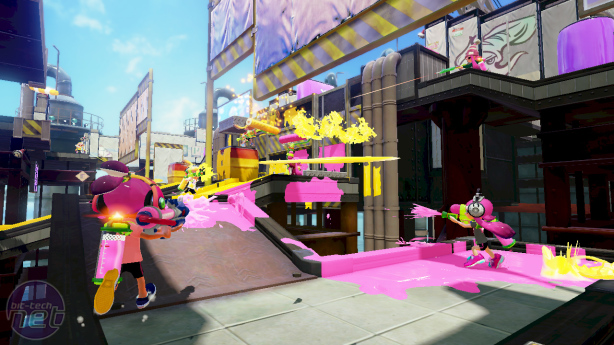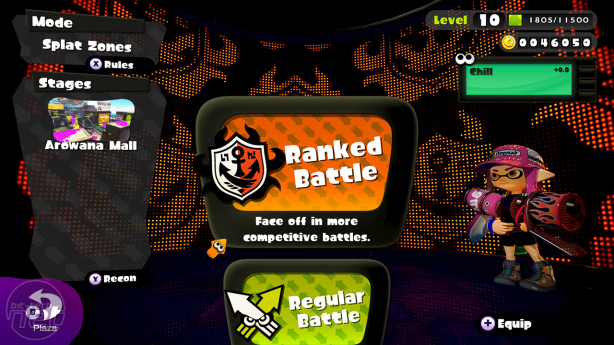
Splatoon Review
Price: £29.99Developer: Nintendo
Publisher: Nintendo
Platform: Wii U
Perhaps it's fitting that the most subversive shooter in ages comes from Nintendo. For years FPS' have focussed on placating their existing audiences through familiar firearms like Call of Duty and Battlefield, and even when they occasionally dare to colour outside the lines, they do so beneath the shade of a well-known title like Wolfenstein or Far Cry. Now Nintendo has turned the genre on its head by targeting an audience that shooters normally avoid - children.
It's such a simple yet ingenious idea that I needed to take a closer look at it (we're PC centric rather than PC exclusive, after all). Having done so, it's clear that Nintendo's gamble - Splatoon is their first completely new title in years, pays off. Mostly. Splatoon is a playful, anarchic and gloriously colourful shooter, one where every surface is a target and in which you don't need to be a crack shot to win. But it fails to explore its concept as fully as it could.
The basic framework is similar to most other recent multiplayer shooters. Two teams of four players face-off in twisting, tightly designed arenas, each trying to score more points than the other. The better you contribute to your team's victory, the more experience and money you earn, enabling you to buy more advanced equipment. There's also a brief but entertaining single-player mode, and a limited local multiplayer, both of which we'll discuss later.
The key difference between Splatoon and other shooters is instead of blasting each other to pieces with bullets, Splatoon's guns spurt globules of viscous ink. This ink stains any surface it comes into contact with, and is available in a multitude of colours, except for those that resemble certain bodily fluids. Indeed, Splatoon can claim to be the only shooter in the world in which you don't paint the walls red.
Splatoon's inventiveness doesn't end there. In other shooters, making a mess is a guilty pleasure, but in Splatoon it's a vital part of the experience. The primary game mode, "Turf War", commands each team to paint as much of the map as possible in their particular colour, and whichever side makes the biggest mess wins. Again, Splatoon flips convention on its head by creating a situation in which hitting the wall is just as important as hitting your opponent, which is great for those people whose trigger fingers are a little slower these days. Ahem.
As a consequence, many of Splatoon's weapons serve a double purpose. Rapid-fire machineguns splatter walls and floors alike with great dollops of gleaming ink, so thick you can almost smell it. Meanwhile, "Splat" rollers enable players to quickly cover the ground in their team's colours and deal heavy damage to the opposing team at close range. There are guns which cater more specifically to dispatching your opponents, like slow-charging sniper rifles, but I found these to be too demanding for the Wii-U's slightly odd motion controls.
Alongside comprising your ammunition, ink is also your lifeblood. Stepping on any area slathered in your opponent's fluorescent goo will slow your movement and drain your health, so keeping the surface beneath your feet slick with your particular shade is crucial. Ink also facilitates Splatoon's second novel mechanic. Pressing the left trigger on your Wii-U pad transforms your avatar into a squid, letting them swim swiftly through your team's ink and quickly replenish your health.

MSI MPG Velox 100R Chassis Review
October 14 2021 | 15:04












Want to comment? Please log in.